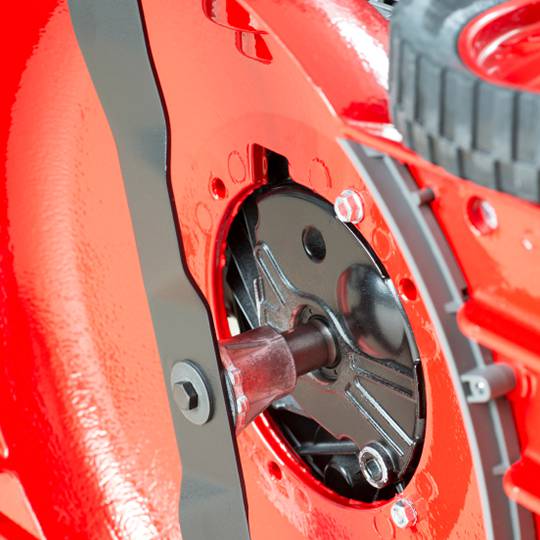Mow Like a Pro: How to Sharpen Mower Blades
Posted
February 4, 2016

Sharpening your mower’s blades twice each season helps maintain your lawn’s health and appearance. Having a sharp blade cuts grass blades cleanly, allowing them to recover quickly. It can also help reduce your mowing time. Read on and learn about how to sharpen mower blades like a lawn professional.
Blades with Normal Wear and Tear
During its lifetime, a mower blade hits rocks, branches, and thatch on your lawn that cause nicks, dings, and curls. Dull mower blades rip the grass blades instead of cutting them cleanly. Ripped grasses are more vulnerable to lawn disease infections. If your blade is in fairly good condition, sharpening it can be a fairly easy task. To sharpen, clamp your blade in a vise and run a metal file along its cutting edge. Ensure that you are following angle of the factory bevel. Always remember to disconnect the spark-plug wire before removing the blade or performing other kinds of mower maintenance. Sharpen the blade every two weeks to maintain your blade.
Badly Damaged Blades
Blades that are more damaged require different care. They should either be replaced or sharpened on a bench grinder. Take the blade to the professionals at a service shop. There, they will inform you as to whether it’s time to spring for a new blade or they will sharpen it for you with a grinder. If you have your own personal grinder, however, you can sharpen the blade yourself.
To sharpen your own blade with a grinder, smooth out nicks by running the blade back and forth against the spinning wheel vertically. Doing this gives you a straight edge. It will be blunt, so next, support the blade on the rest plate. Then hold the blade at the angle of the existing bevel. Grind the blade’s length until its edge is sharp.
Balancing Act
Always be sure that the blade is balanced, as an off-kilter blade can damage your mower. You can purchase a plastic balancer at most local lawn-care centers for an affordable price. To use, start by resting the blade on the balancer. If one side dips down, it means the steel needs to be ground on that end—not from the cutting edge—in order to lighten it. After you have balanced the blade, it’s safe to bolt it back onto the mower. Now you’re ready to mow!
Questions? Call the professionals at Cardinal Lawns for advice or assistance with your yard.
Special Offer for New Customers
Two Free Lawn Care Treatments
Hurry! Offer Expires April 30, 2025